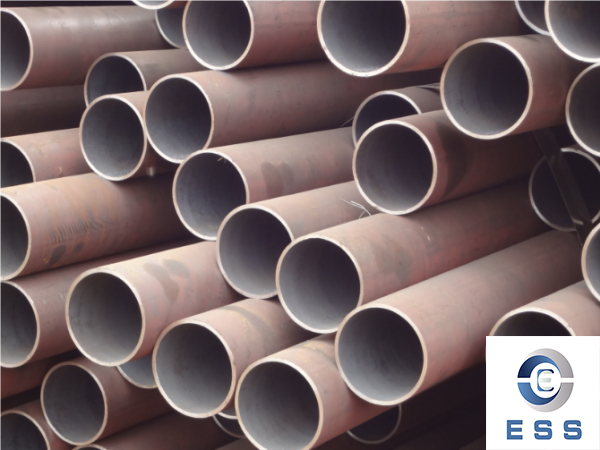What needs to be considered when choosing carbon steel pipe raw materials?
As we all know, the raw material of carbon steel pipe is carbon steel. Carbon steel is widely used in many industries. It's reasonably priced and affordable, while still offering great mechanical properties. Carbon steel typically consists of 0.05% to about 2.0% carbon along with iron and other elements. Since carbon steel is often used in many applications, it is better to know it to choose it. Here are some things to consider when choosing carbon steel:

1. Is the machinability of carbon steel good?
There are many types of carbon steel, some are easy to machine and others are difficult to machine. Low carbon steel has good machinability, such as C1010 and C1018.
Carbon steels with a higher carbon content can also be machined easily, but with sulfur added to the chemical composition, such as C1141 and C1144.
C1045 has a higher carbon content but no other elements to help it process, so it is a poorer choice if processing is required.
2. Is the weldability of carbon steel good?
Certain types of carbon steel have very good weldability. However, there are several factors to consider when choosing which carbon steel to weld.
First, carbon steels suitable for machining, such as C1141 and C1144, are generally not weldable. The addition of sulfur to these carbon steels can lead to solidification cracks in welds.
Mild steels such as C1018 and A36 would be better choices as they are easy to weld.
Higher carbon steels such as C1045 may also be used but may require preheating or post weld heat treatment.
3. What is the strength requirement of carbon steel?
Mild steels tend to lack tensile strength compared to other carbon steels. These mild steels should be avoided if high strength is required.
Carbon steel with a higher carbon content provides greater strength and hardness than carbon steel with a lower carbon content. For example, the strength and hardness of C1045 are higher than that of C1008. However, mild steel also has an alternative: high-strength low-alloy steel (HSLA). HSLA is a low carbon base steel specifically designed to have higher strength while maintaining formability.
4. Does carbon steel need good formability?
The category of carbon steel is so broad that there are many different combinations of mechanical properties.
If ductility is required, lower carbon grades such as C1008 and C1010 should be considered.
As a rule of thumb, low carbon steels are easier to form than high carbon steels.
5. Is the heat treatment of carbon steel easy?
Carbon steels with a carbon content greater than 0.30% can be easily heat treated, such as C1045 and C1141.
Another option is steel with a carbon content of just over 0.20%.
These carbon steels can add trace amounts of other elements to improve their hardenability, such as A36.
Low carbon steel, that is, steel with a carbon content below 0.20%, is not easily heat treated.
6. Does carbon steel have good corrosion resistance?
The corrosion resistance of carbon steel is not very good.
They consist primarily of iron which can oxidize, forming rust.
If enough corrosion-resistant elements, such as chromium, are not added to the chemical composition, the corrosion resistance will not be very good.
Choosing galvanized or plated carbon steel is a viable option for corrosion protection.
Alternatively, adding oil or paint to the surface of carbon steel is a good way to help prevent iron from oxidizing.
7. Application field
Knowing the common applications of the different grades of carbon steel can help you choose the right carbon steel for your application. Here are some typical uses:
A36/44W: Automotive components, cams, fixtures, fuel tanks, forgings, structural applications such as buildings or bridges.
C1008, C1010, C1018: Mechanical parts, tie rods, lower strength structural applications, mounting plates and brackets.
C1045: Bolts, gears, crankshafts, cylinder shafts, die forgings and applications requiring higher strength or higher hardness than C1008 or C1010.
C1141 and C1144: Studs, bolts, shafts, tie rods and similar applications to C1045.
Select the raw material of carbon steel pipe according to the corresponding use, and you can definitely find the exact type of steel pipe.













 Eastern Steel Manufacturing Co.,Ltd not only improve product production and sales services, but also provide additional value-added services. As long as you need, we can complete your specific needs together.
Eastern Steel Manufacturing Co.,Ltd not only improve product production and sales services, but also provide additional value-added services. As long as you need, we can complete your specific needs together.










